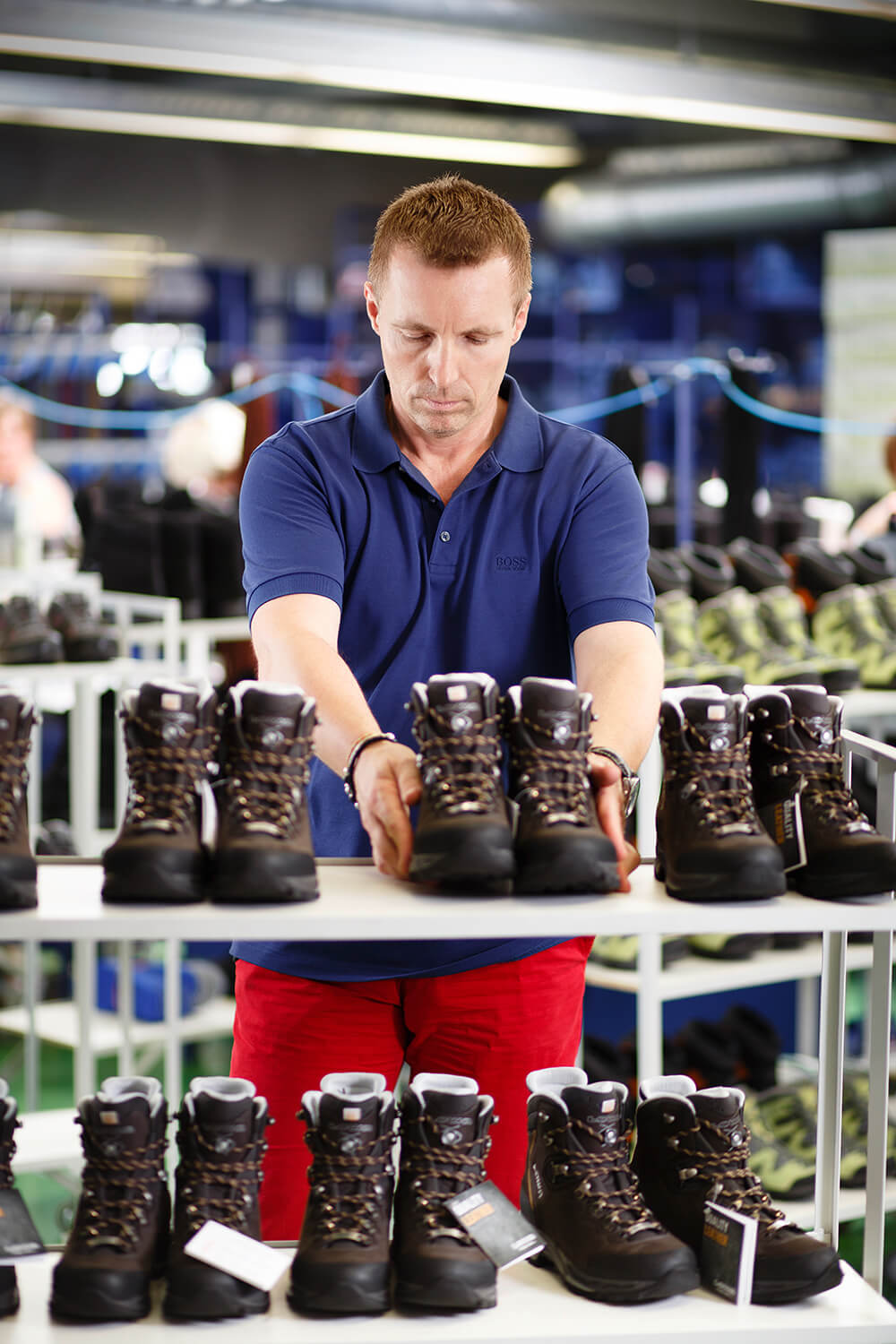Across Europe today, LOWA is the market leader for premium outdoor boots and shoes, producing nearly 3 million pairs a year. You might be thinking ‘LOWA’s boot production must have something to do with the success of the company’ and, well, you’d be right!
Before we look into the stages of LOWA’s cemented sole or board-lasted boot production, let's look at how LOWA ensures the high quality of their products. It is important to LOWA to ‘live the brand’ and associate in live mountain sport, so keeping the headquarters and the production of boots in Europe is essential to meeting the company’s aims. They did start by making mountain boots, after all!
Now let's take a look at the 5 main stages of LOWA boot production.
1. Die-Cutting
2. Lasts
In LOWA boot production the shank supports and guides the foot whilst preserving the shoe’s form. This is stitched or glued onto the ends, and is often placed from the middle of the heel to the beginning of the front of the foot. From here, in order to make the boot’s uppers supple, they are passed through a steam chamber. This assists in enabling the uppers to be pulled over the last so the front section of the LOWA military boot can be glued to the shank. The heel and ankle sections are then bonded to the shank of the boot.
3. Stitching
The quality of LOWA military boots are highly influenced in this stage of the LOWA boot production. This is the stage where every single upper is hand stitched, a process that is carried out on all boots across the LOWA range; from LOWA military boots to LOWA safety boots. As many as 75 separate procedures are involved in the hand stitching stage, so you can be sure that the work gone into the making of your LOWA boots is second to none.
To ensure maximum support and protection of your feet, LOWA double stitches the critical wear zone of each boot, allowing you to get the most out of your boots and make them last. Supporting the company’s values of fit, comfort, innovation and quality that LOWA has stood by for over 100 years. A new synthetic thread that doesn’t absorb moisture is used to stitch each seam on the boots. This is the stage where the shoe-like shape starts to take place and the uppers are laced up.
4. Hemming
During the hemming stage of LOWA boot production, the bottom section of the upper material is roughened to allow the rubber rand to be attached by hand after glue has been pasted onto the roughened section of the upper. Once the rand has been placed onto the boot, it is then passed through a machine to press bonded to the shoe.
5. Fixing The Midsole/Outsole
With cement constructed boots, the upper is produced separately to the sole. As a result, during the cementing section of the LOWA boot production process, the sole and the shoe are glued and pressed together. Unlike other boots, it is possible with LOWA military boots and LOWA safety boots to re sole rubber outsoles that have been cemented. So boots using soles such as the Vibram Tsavo and MVS can be re soled.
Finally, the last part in LOWA boot production is the other method Lowa use in the manufacture of Lowa boots – injected sole production or injection moulding. This is where the uppers are pulled onto a last and bonded to the rubber soles, using an injection moulding machine and a special polyurethane (PU) material. The PU completely covers the sole of the boot ensuring that each individual component is secure and durably bonded together.
These are just the main stages involved in LOWA boot production, however, each model has its own unique characteristics due to the use of different materials, soles and processes used. If you're interested, we do have a more detailed, in-depth guide on the production methods used to make LOWA boots, if you'd like to give it a read. So if you have specific requirements for a pair of LOWA boots and are struggling to know which would be the best fit for you, feel free to get in touch with us via our website, through Social Media, or just pick up the phone and call on 01752 344355.


